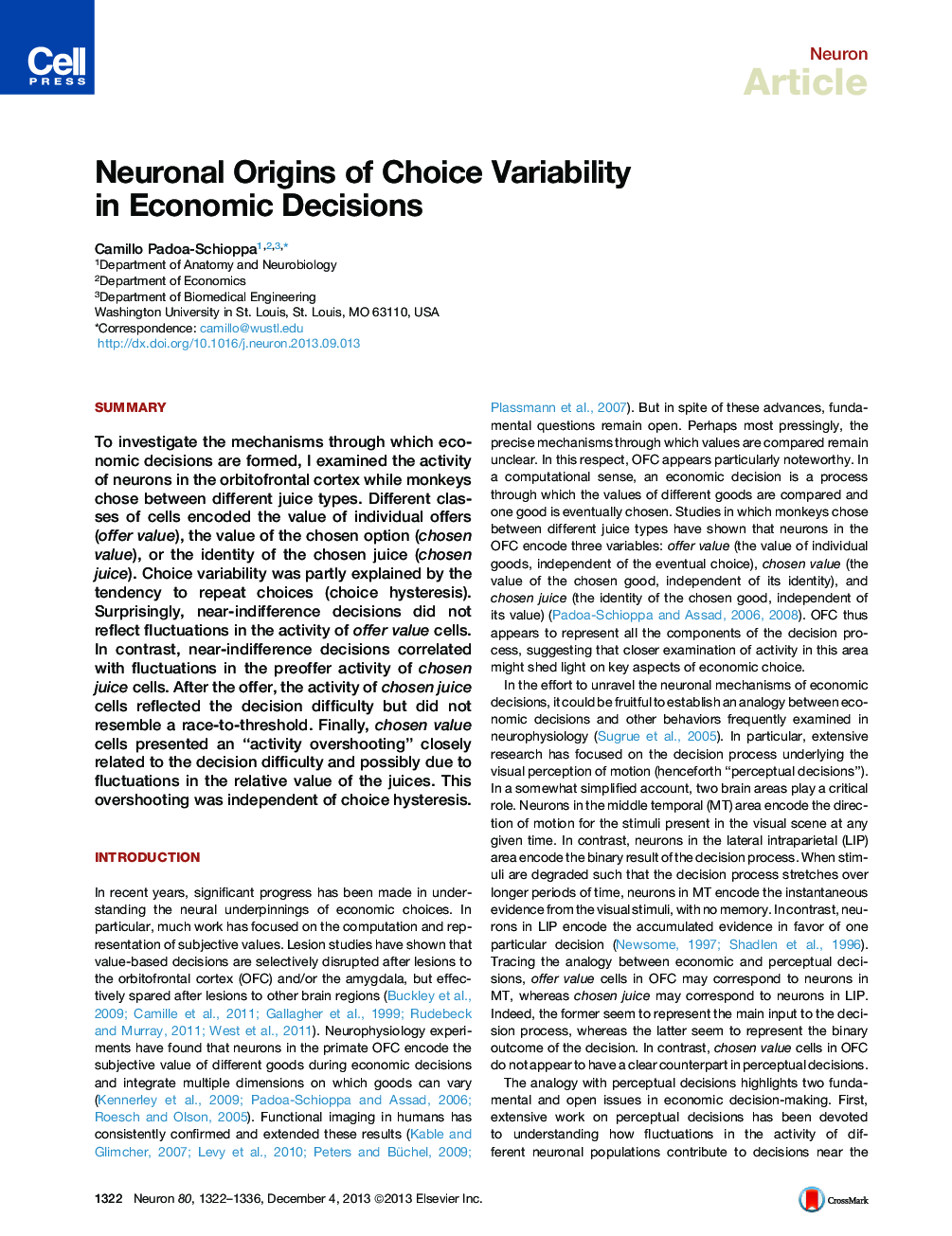| Article ID | Journal | Published Year | Pages | File Type |
|---|---|---|---|---|
| 4321288 | Neuron | 2013 | 15 Pages |
•Neurons encoding offer values do not present significant choice probabilities•Choice variability is partly explained by the initial state of the neuronal assembly•Choice variability may be partly due to stochastic fluctuations in relative value•Neuronal activity encoding the binary choice outcome is unlike a race-to-threshold
SummaryTo investigate the mechanisms through which economic decisions are formed, I examined the activity of neurons in the orbitofrontal cortex while monkeys chose between different juice types. Different classes of cells encoded the value of individual offers (offer value), the value of the chosen option (chosen value), or the identity of the chosen juice (chosen juice). Choice variability was partly explained by the tendency to repeat choices (choice hysteresis). Surprisingly, near-indifference decisions did not reflect fluctuations in the activity of offer value cells. In contrast, near-indifference decisions correlated with fluctuations in the preoffer activity of chosen juice cells. After the offer, the activity of chosen juice cells reflected the decision difficulty but did not resemble a race-to-threshold. Finally, chosen value cells presented an “activity overshooting” closely related to the decision difficulty and possibly due to fluctuations in the relative value of the juices. This overshooting was independent of choice hysteresis.
